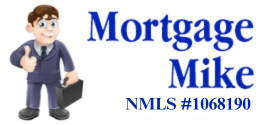Could a Reverse Mortgage Save Your Retirement?
As baby boomers retire at the rate of 10,000 per day, many of them are woefully underfunded for their future retirement needs.
While reverse mortgages have gotten a bad rap over the last decade, the product has changed and become more regulated. Reverse mortgages are now gaining a lot of attention as a viable option for retirement income.
Most people tend to underestimate their life expectancy, save less than they should and fail to consider how much health care might cost in retirement, says David W. Johnson, associate professor of finance at the John E. Simon School of Business at Maryville University in St. Louis.
“Although we are living longer, we are also experiencing more health issues with our increased life expectancy,” Johnson says. “The typical 65-year old couple will need $305,000 to cover out-of-pocket health care costs over their lifetime. Most people have not planned for these type of expenses. Increased life expectancy and unexpected expenses increase the possibility of outliving your assets.”
As baby boomers move into retirement without sufficient income sources, many Americans are going to be unable to meet their basic financial needs in retirement, says Jamie Hopkins, associate professor at The American College of Financial Services in Bryn Mawr, Pennsylvania, and co-director at the New York Life Center for Retirement Income.
“This retirement income shortfall is nothing less than a crisis facing the United States,” Hopkins says.
Reverse mortgages are another tool in the retirement toolbox that could offer seniors cash flow needed to cover living costs. Admittedly, Americans have a strong negative bias toward reverse mortgages, Hopkins says.
“Much of that negative bias is rooted in misconceptions and issues with bygone reverse mortgage issues. The reverse mortgages of today are not the same as reverse mortgages 10 year ago. As such, reverse mortgages deserve a second look today,” Hopkins says.
“Reverse mortgage loans are one of the most misunderstood financial products in existence,” Johnson says.
One of the most common misconceptions is that the bank will own your home if you take out a reverse mortgage, says Reza Jahangiri, chief executive officer at the American Advisors Group in Orange, California.
“In actuality, with a reverse mortgage loan, borrowers retain ownership of their home, as long as they stay current on their property taxes, homeowner’s insurance and otherwise comply with the loan terms,” Jahangiri says.
“I believe in the product enough that I recommended a reverse mortgage for my own parents. I have seen firsthand how a reverse mortgage made a difference in the quality of their lives during retirement,” Johnson says.
The market has become simplified in recent years. The Home Equity Conversion Mortgage is used for nearly all reverse mortgages, Hopkins says. It is essentially a government loan sold by private companies.
“The HECM is extremely well regulated. However, that does not mean there are not differences between companies,” Hopkins says. “You should still shop around for the best rate, lender, service, and fees.”
For most seniors, the majority of their wealth is stored in their home, which is not a very liquid asset. A reverse mortgage is a way for homeowners to unlock some of the equity in their home without having to make monthly mortgage payments.
Who is eligible? To be eligible for a Home Equity Conversion Mortgage, you must be a homeowner 62 or older, own your home outright or have a low mortgage balance that can be paid off at closing with proceeds from the reverse loan. You need to have sufficient financial resources to pay for property taxes and insurance, and you must live in the home.
“The loan becomes due and payable when the last remaining homeowner leaves the home permanently,” Jahangiri says.
A reverse mortgage is a non-recourse loan, as the home is the only collateral that can be used to repay the loan balance.
“This means that if the sale of the home does not cover the entire loan balance, then FHA pays the difference, not the borrower’s family,” Jahangiri says.
How much could a borrower expect to receive? “Depending on their age, homeowners typically can tap between 50 percent and 75 percent of the home’s appraised value, with a maximum loan limit of $625,500. The older the borrower and the lower the interest rate, the higher the available loan amount,” says Tom Dickson, national leader financial advisor channel at Reverse Mortgage Funding in Bloomfield, New Jersey.
Another option that’s growing in popularity is one where a borrower takes out a reverse mortgage standby line of credit, Jahangiri says.
“This is a great option for borrowers who aren’t interested in tapping their equity unless an emergency arises or when they feel the funds are needed,” he says.
Tapping into your home equity through a reverse mortgage HECM line of credit can be an effective way to avoid selling your investments when they drop in value, Hopkins says.
“Let’s say the market drops 30 percent next year. Would you rather sell your stocks that are down 30 percent to get your retirement income or would you rather borrow from your home equity at 3 to 4 percent interest? The answer is clear,” Hopkins says. “You would be much better off using your home equity in a down market year. Doing this could substantially increase the sustainability of your retirement portfolio and help make your money last for a lifetime,” Hopkins says.
Article by money.usnews.com


